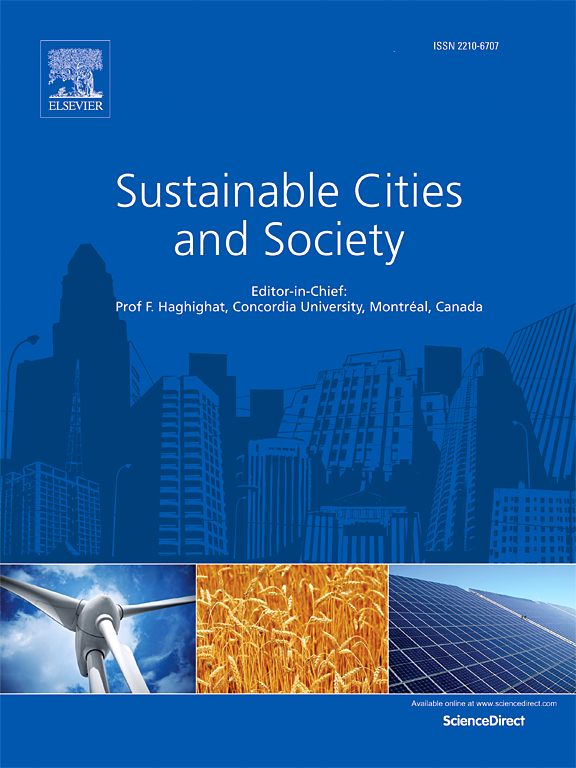Mapping lifecycle building material embodied carbon emissions for Beijing-Tianjin-Hebei urban agglomeration
IF 10.5
1区 工程技术
Q1 CONSTRUCTION & BUILDING TECHNOLOGY
引用次数: 0
Abstract
Accurate carbon accounting is crucial for global climate change mitigation efforts. Building Material Embodied Carbon Emissions (BMCE) constitutes a significant portion of urban carbon footprints. However, the map of it at the building level remains sparse. This study proposes a model integrating multi-source remote sensing data for lifecycle BMCE mapping and assesses the building carbon efficiency according to eco-efficiency theory. Results show that BMCE in Beijing-Tianjin-Hebei urban agglomeration has a total of 3,946 , with intensity of 600 . BMCE of residential buildings is the highest, double that of public buildings. Approximately 60 % of buildings are in low carbon efficiency. They emit more than 2,367 . This study provides valuable insights into the statistical and spatial characteristics of lifecycle BMCE and highlights the importance of carbon efficiency analysis for future urban carbon reduction.
求助全文
约1分钟内获得全文
求助全文
来源期刊

Sustainable Cities and Society
Social Sciences-Geography, Planning and Development
CiteScore
22.00
自引率
13.70%
发文量
810
审稿时长
27 days
期刊介绍:
Sustainable Cities and Society (SCS) is an international journal that focuses on fundamental and applied research to promote environmentally sustainable and socially resilient cities. The journal welcomes cross-cutting, multi-disciplinary research in various areas, including:
1. Smart cities and resilient environments;
2. Alternative/clean energy sources, energy distribution, distributed energy generation, and energy demand reduction/management;
3. Monitoring and improving air quality in built environment and cities (e.g., healthy built environment and air quality management);
4. Energy efficient, low/zero carbon, and green buildings/communities;
5. Climate change mitigation and adaptation in urban environments;
6. Green infrastructure and BMPs;
7. Environmental Footprint accounting and management;
8. Urban agriculture and forestry;
9. ICT, smart grid and intelligent infrastructure;
10. Urban design/planning, regulations, legislation, certification, economics, and policy;
11. Social aspects, impacts and resiliency of cities;
12. Behavior monitoring, analysis and change within urban communities;
13. Health monitoring and improvement;
14. Nexus issues related to sustainable cities and societies;
15. Smart city governance;
16. Decision Support Systems for trade-off and uncertainty analysis for improved management of cities and society;
17. Big data, machine learning, and artificial intelligence applications and case studies;
18. Critical infrastructure protection, including security, privacy, forensics, and reliability issues of cyber-physical systems.
19. Water footprint reduction and urban water distribution, harvesting, treatment, reuse and management;
20. Waste reduction and recycling;
21. Wastewater collection, treatment and recycling;
22. Smart, clean and healthy transportation systems and infrastructure;
 求助内容:
求助内容: 应助结果提醒方式:
应助结果提醒方式:


